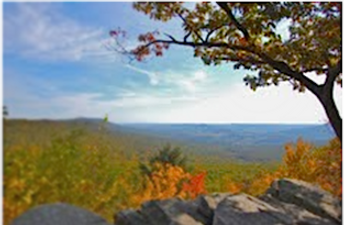

Sierra Club of the Lehigh Valley
Explore, Enjoy, and Protect the Planet
Issues and Actions
It can be said that our regional club was conceived during the victory of Tocks Island and sprung into life during the I-78 controversy. We have maintained that commitment to direct political, educational and social action since that time. There is always an issue, local or national, that needs our attention. And, there is always the need for one more hand to join us in the council chamber, the canvassing route or at the mail box. We look forward to your being part of the club’s great and growing tradition of environmental activism!
Current Projects
In the past decade, the local organization has focused attention on threats to the Appalachian Trail represented by the encroachment of the Mega Ski Resort and Alpine Resorts. In other locations, the group has engaged in preserving open space in Lehigh and Northampton Counties through the enactment of regional legislation. Currently, the club is very active in the Marcellus Shale controversy, global warming and issues such as waste disposal and water management. We invite you to contact the political chair of our Excom Committee, Al Wuerth, to see how you can help us address our regional environmental challenges.



Hydrofracturing natural gas drilling, or “fracking”, starts with a good bit of water, which generally ranges from about 2 million to 4 million gallons, and a lot of sand. Mix those two together, apply a couple thousand pounds of pressure, and introduce them to a reservoir several thousand feet below the earth’s surface. Additives, such as corrosion inhibitors, biocides, and emulsifiers (e.g. guar) are added to facilitate the process. The force of the water creates a network of tiny fissures in the impermeable shale.
The flow of water acts as a delivery mechanism for the sand, which finds its way into those newly created cracks and holds them open. This creates passageways through which the previously trapped natural gas can travel to get to the wellbore. The fracturing process is now finished; on average, it takes 3 to 10 days to complete.
The produced water from the Marcellus Shale must be treated. In addition to the added chemicals, the water picks up hydrocarbons, heavy metals like arsenic, and radioactivity from the shale. This water needs to be trucked to a final disposal site.
The most common method of disposal will be Deep Well Injection Disposal, where the waste is forced underground at high pressure into dry gas wells. The newly stimulated well will produce gas for decades, although the majority of gas is released in the first five years. The trucks, the pumps, the equipment, and the traffic that were needed to develop the well are now gone, leaving a well pads, ranging from 5-15 acres, depending on the number of well heads it contains.
The operator typically leaves a production valve, collection equipment, and compressor station behind. Compressor stations are spaced throughout the drilling areas for as many as 100 wells. They are comprised of engines usually running on diesel fuel that run around the clock, and are not quiet.
It does not take a rocket scientist to realize that all this disturbance, road building, and noise are not conducive for solitary animals that live in our state parks and forests to live out their lives in peace. Populations of birds and animals are being changed by these activities.